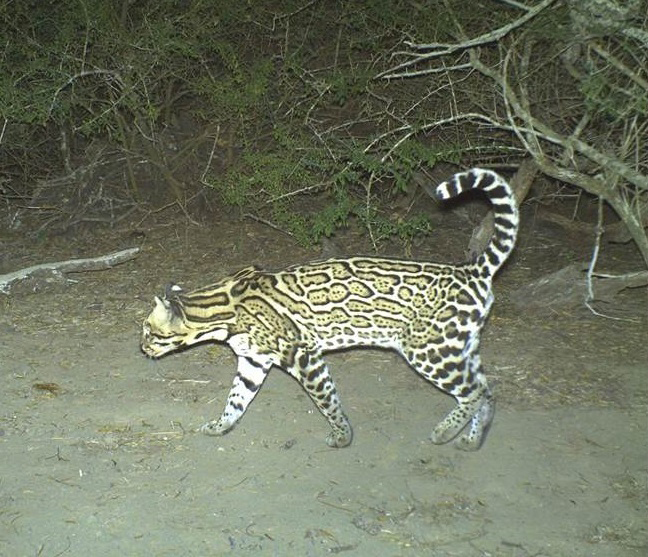Special to the PRESS
An endangered ocelot was killed by a vehicle on State Highway 186 between Raymondville and Port Mansfield, Texas, on June 8, 2015. The U.S. Fish and Wildlife Service identified it as a female ocelot and the veterinarian who performed the 33necropsy confirmed the death was caused by a vehicular collision. It was determined the ocelot was a mature female that had bred in the past, but did not appear to be raising a litter at the time of death. The ocelot was a member of the Willacy County population and had been studied since she was detected in 2011 through remote camera trapping by the Caesar Kleberg Wildlife Research Institute on the East Foundation’s El Sauz Ranch.
Tyler Campbell, Chief Program Officer and Principal Scientist for the East Foundation stated, “Our staff and scientists were discouraged by the loss of this adult female ocelot, which our research partners at the Caesar Kleberg Wildlife Research Institute had photo-documented for several years as part of our ongoing research efforts directed at ocelot recovery. The location of her death serves as a strong reminder of how important private lands are for ocelots in South Texas.”
Of the remaining estimated 80 ocelots in Texas, this female was one of approximately 30 identified ocelots in the Willacy County population, all found on private lands. The only other remaining ocelot population in the U.S. is in Cameron County, in and around the Laguna Atascosa National Wildlife Refuge.
At least five other ocelots have been killed by vehicles along this stretch of road between 1989 and 2004, including two females and three males.
For the remaining ocelot populations to stay healthy and genetically diverse, they must be able to travel and breed with ocelots from other populations. The need to cross roads and highways to do so is a deadly hazard for these wild cats.
Scientific studies have shown that wildlife crossings, in particular an under-the-road passage with fencing to funnel animals to it, are very effective at keeping wildlife off roads. Crossings have been successful in south Florida where vehicle collisions with endangered Florida panthers were a huge threat to their existence. Locally, an existing wildlife crossing on State Highway 48, near the Refuge’s Bahia Grande Unit, has been used by bobcats, raccoons and coyotes.
“Under road wildlife crossings can play an important role in alleviating unnecessary ocelot deaths” says Zone Biologist Mitch Sternberg. “Because so few wild cats remain, losing one animal has a huge impact on the population.” The crossings not only keep wildlife safe, but also reduce risks to the public from collisions or accidents that occur when drivers swerve to avoid hitting wildlife”.
Sternberg also stated that the public plays an important role in keeping this endangered wild cat in the Rio Grande Valley. “The public can contribute to our knowledge of ocelots by watching for ocelots throughout the valley”. The public is encouraged to report any possible sightings to the Refuge by calling 956-748-3607, or after hours 956-784-7520.
To learn more about ocelots in south Texas, visit the Refuge’s website www.fws.gov/refuge/laguna_atascosa or Facebook page www.facebook.com/LagunaAtascosaNWR.
Want the whole story? Pick up a copy of the Port Isabel-South Padre Press, or subscribe to our E-Edition by clicking here.




Comments